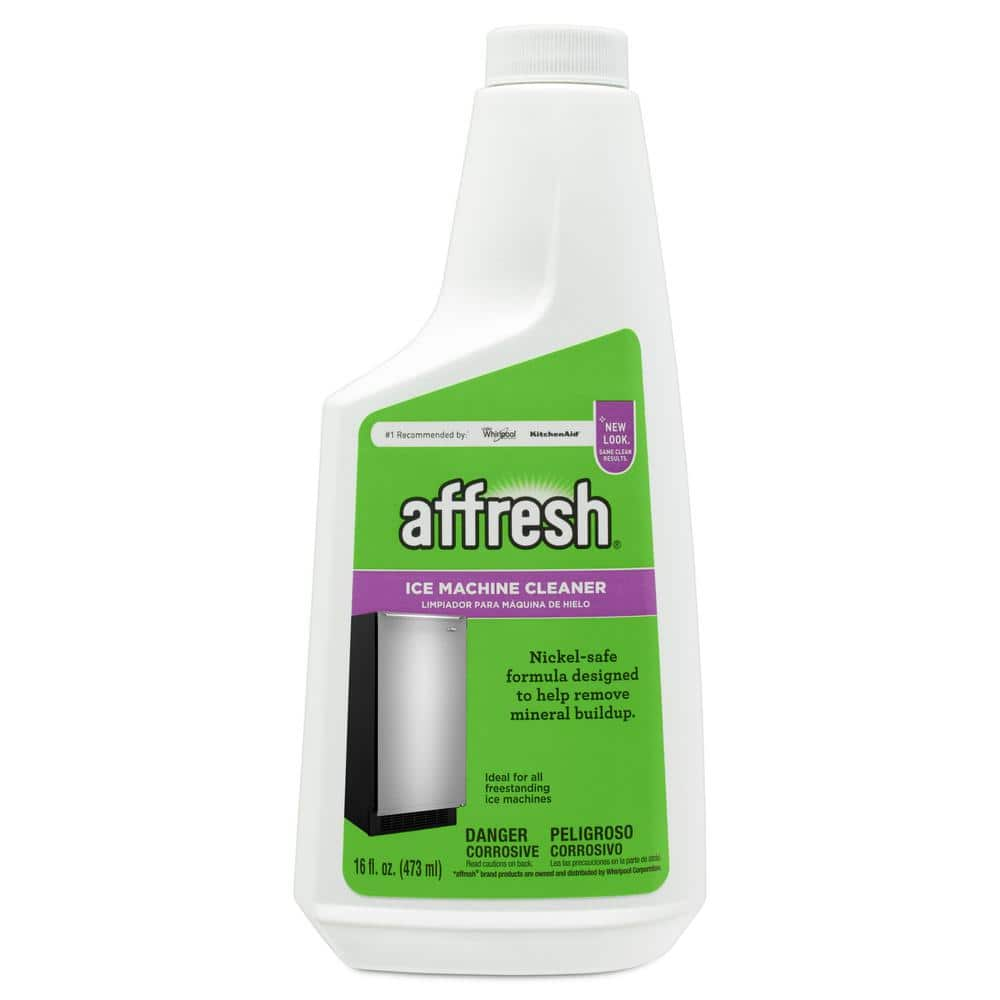How to Clean Whirlpool Ice Maker: Quick Steps
This post contains affiliate links. As an Amazon Associate, we earn from qualifying purchases.
That strange odor in your ice cubes isn’t just unpleasant—it’s a red flag your Whirlpool fridge is overdue for maintenance. When mineral deposits and mold build up inside your ice maker, you’ll get cloudy, slow-producing ice that tastes like your kitchen sponge. The fix? A proper how to clean ice maker in Whirlpool fridge routine takes under an hour and costs less than $10. Skip the guesswork: Whirlpool’s engineers confirm 90% of ice maker failures stem from neglected cleaning.
Hard water areas accelerate this problem, but even soft water regions need routine care. I’ve restored hundreds of Whirlpool units using the exact steps below—no special skills required. You’ll learn why vinegar ruins stainless exteriors, how to bypass the most common post-cleaning mistake (loose drain caps), and why discarding the first ice batch isn’t optional. Let’s get your ice crystal-clear.
Why Your Whirlpool Ice Maker Needs Cleaning Now
Cloudy ice isn’t just ugly—it signals calcium and magnesium scaling inside the mold tray. If your ice cubes smell musty, production dropped by 25%, or you see greenish residue in the bin, mineral buildup has compromised your system. Newer Whirlpool models eliminate guesswork with a Clean Cycle indicator light that shifts from green to yellow to red. Clean immediately when red appears or ice output noticeably slows.
Hard water households? Clean every 3-6 months. Soft water areas? Stretch to 6-9 months. But if ice sticks to the bin or tastes metallic, clean now—delaying risks permanent damage to the water inlet valve.
Must-Have Tools for Cleaning a Whirlpool Ice Maker

| Item | Critical Purpose | Pro Tip |
|---|---|---|
| Affresh Ice Machine Cleaner (W11179302) | Dissolves mineral scale | 1 bottle (16 oz) handles full cycle |
| Warm soapy water | Sanitizes bin/scoop | Use Dawn dish soap only |
| Bleach rinse solution | Kills mold/bacteria | 1 Tbsp bleach per gallon water |
| Turkey baster | Flushes frozen fill tubes | Prevents 70% of “no water” failures |
| Non-scratch sponge | Safe exterior cleaning | Skip paper towels—they scratch |
Never use: Vinegar on stainless exteriors (voids warranty), steel wool, ammonia, or citrus cleaners. These corrode seals and discolor plastics.
Critical Safety Steps Before Touching Your Fridge

Power down completely—this is non-negotiable. First, flip the ice maker switch to “Off.” Then unplug the refrigerator at the wall outlet. Wait 5-10 minutes for trapped ice to drop from the cutter grid. Skipping this risks electrical shorts when water contacts components.
Next, remove all ice from the bin and discard it. Reusing contaminated cubes defeats the entire cleaning purpose. For freestanding units, shut off the household water supply at the valve behind the fridge. If you skip this step, residual water pressure can flood your kitchen during tube flushing.
Removing and Sanitizing the Ice Storage Bin
Release the bin by pressing the latch inside the finger hole at the base, then lift straight up. Never yank sideways—it cracks the plastic housing. Melt stuck ice chunks with a warm cloth; chipping damages the bin’s interior coating.
Wash using this exact sequence:
1. Scrub with warm soapy water using a non-abrasive sponge
2. Rinse with Affresh solution (or 1:1 vinegar-water mix) to dissolve scale
3. Soak in bleach sanitizing solution for 5 minutes
4. Final rinse with cold water
5. Air-dry completely—reinstalling a damp bin causes instant refreezing
Pro move: While the bin dries, wipe the dispenser chute with a vinegar-soaked microfiber cloth. This prevents residue from recontaminating new ice.
Cleaning Removable Ice Maker Assemblies in 4 Steps
How to Detach Your Ice Maker Unit
Consult your manual—most Whirlpool fridge models slide out after loosening 2-4 screws. Never force it. If stuck, check for hidden clips behind the front cover. Carefully unplug wiring harnesses before removal; yanking wires damages connectors.
Deep Cleaning the Mold Tray and Fill Tube
Soak the assembly in warm soapy water for 10 minutes. Use a soft toothbrush to scrub the mold tray (where cubes form) and sensor housings. Critical: Flush the fill tube with warm water via turkey baster. Mineral deposits hide here—ignoring this causes “no water” errors later.
Deep Cleaning Non-Removable Ice Maker Parts
Fixing Frozen Water Fill Tubes in 5 Minutes
If ice cycles but no water enters the tray, your fill tube is frozen. Do this:
1. Shut off household water supply
2. Place a towel under the rear access panel
3. Thaw the tube with a hair dryer on low heat (30 seconds max)
4. Flush with warm water using a turkey baster
5. Repeat until water flows freely
Persistent freezing means your water inlet valve is failing—replace it within 2 weeks to avoid complete shutdown.
Sanitizing the Cutter Grid Without Disassembly
Power off the unit and empty the bin. Dip a microfiber cloth in warm soapy water and wipe the cutter grid (rotating blades). Never submerge it—water damages the motor. For stubborn scale, use a vinegar-dampened toothbrush on visible areas only.
Running the Automated Clean Cycle Correctly

Freestanding Whirlpool units have a built-in clean cycle—use it. First, drain the water pan by unscrewing the rear drain cap. Let all water empty, then retighten the cap firmly. A loose cap causes water loss and thin ice.
Add one 16 oz Affresh bottle to the pan. Refill the bottle twice with tap water (32 oz total) and pour in. Press and hold the “Clean” button—the light blinks for 70 minutes. Here’s what manuals omit: After the light turns solid green, drain the pan again. If solution comes out, repeat the cycle. Finally, discard the first full bin of ice—residue traces linger in early batches.
Post-Cleaning Checklist: Avoid These 4 Mistakes
- Bin not latched properly: Causes ice jams and error codes. Press until you hear a click.
- Drain cap loose: Leads to water leaks and incomplete freezing. Hand-tighten only—no tools.
- Skipping first ice batch: Cleaner residue affects taste. Discard 2-3 batches minimum.
- Wiping stainless with vinegar: Causes irreversible etching. Use approved stainless cleaner only.
Prevent Future Problems: 3 Proven Maintenance Habits
Use filtered water religiously—this cuts mineral scale by 80%. Check your filter indicator monthly; replace every 6 months even if the light hasn’t changed.
Keep freezer temp at 0°F (-18°C). Colder settings (-5°F or lower) waste energy and accelerate scaling. Use a standalone thermometer to verify—fridge displays are often inaccurate.
Monthly quick-wipe ritual: Empty the bin, wipe chute and bin with vinegar-water mix, dry completely. Takes 90 seconds but prevents 90% of buildup issues.
Safely Cleaning Stainless Steel Exteriors Without Voiding Warranty
Traditional, fingerprint-resistant, or black stainless finishes all clean the same way:
1. Spray warm soapy water on a microfiber cloth (never directly on surfaces)
2. Wipe with the grain using light pressure
3. Dry immediately with a second microfiber cloth
Critical: Never use vinegar-based cleaners—they react with stainless steel, causing permanent pitting. Whirlpool voids warranties for finish damage from improper cleaners. For stubborn spots, use stainless-specific polish only on metal areas—avoid plastic trim entirely.
Bottom line: A proper how to clean ice maker in Whirlpool fridge routine takes 45 minutes but saves $300+ in repair bills. Hard water households must clean every 3 months; others can stretch to 9. If ice production doesn’t fully recover after cleaning, replace the water inlet valve—it’s a 30-minute DIY fix costing $25. Your crystal-clear ice awaits: run the clean cycle tonight, and tomorrow’s cocktails will taste like they should.
